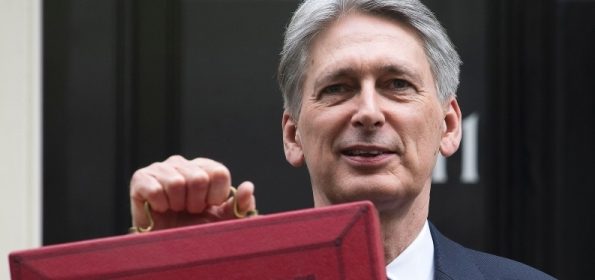
The Chancellor, Philip Hammond, delivered a relatively neutral budget with the backdrop of an improving economy but a large debt overhang of £1.7tn being some 88% of GDP (up from £350bn in 1996 – 48% of GDP, £600bn in 2006 – 43% of GDP and £1tn in 2010 – 68% of GDP).
The Office for Budget Responsibility increased its forecast for growth in the economy to 2% for the current year. Other forecasts are shown in the table with improving figures on most counts. One slightly surprising figure slipped out from the Chancellor that borrowing would be £100bn higher in the next four years than predicted in the Spring 2016 budget.
| Economic Growth % | Inflation Rate % | Borrowing Requirements £bn | PSBR/GDP % | Debt/GDP % | |
|---|---|---|---|---|---|
| 2017-18 | 2 | 2.4 | 51.7 | 3.8 | 88.5 |
| 2018-19 | 1.6 | 2.3 | 58.3 | 2.6 | 86 |
| 2019-20 | 1.7 | 2 | 40.8 | 1.9 | 83 |
| 2020-21 | 1.9 | 2 | 21.4 | 0.9 | 79.8 |
The Chancellor echoed concerns about the UK’s low productivity rates and reiterated hopes that spending already announced on infrastructure would help together with support for new scientific and engineering research.
Already announced rises in the ISA allowance to £20,000 from April 2017 and the Personal Allowance to £11,500 were mentioned although, of course, the personal allowance tapers down for those earning over £100,000 (to zero when earning over £123,000).
No further changes to pensions were announced apart from a proposed 25% charge on certain transfers to QROPS (Qualifying Recognised Overseas Pension schemes).
Adult social care was highlighted as a significant concern with half a million more over 75s in the UK than in 2010 and an expectation of two million more by 2020.
Risk warnings
This document has been prepared based on our understanding of current UK law and HM Revenue and Customs practice, both of which may be the subject of change in the future. The opinions expressed herein are those of Cantab Asset Management Ltd and should not be construed as investment advice. Cantab Asset Management Ltd is authorised and regulated by the Financial Conduct Authority. As with all equity-based and bond-based investments, the value and the income therefrom can fall as well as rise and you may not get back all the money that you invested. The value of overseas securities will be influenced by the exchange rate used to convert these to sterling. Investments in stocks and shares should therefore be viewed as a medium to long-term investment. Past performance is not a guide to the future. It is important to note that in selecting ESG investments, a screening out process has taken place which eliminates many investments potentially providing good financial returns. By reducing the universe of possible investments, the investment performance of ESG portfolios might be less than that potentially produced by selecting from the larger unscreened universe.


